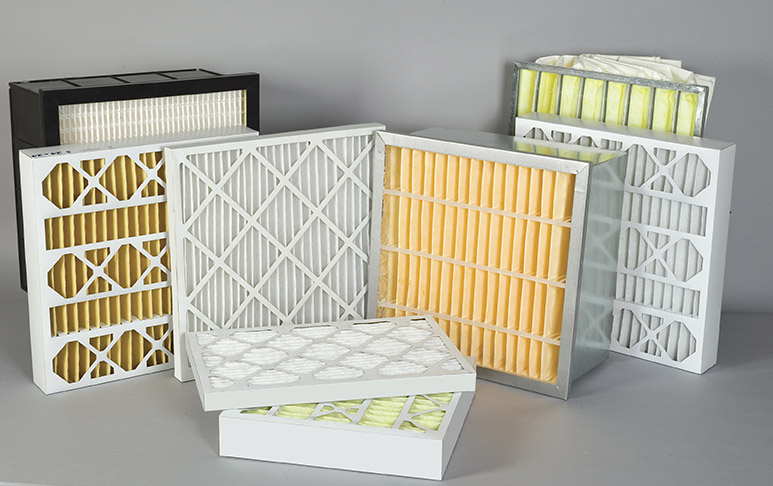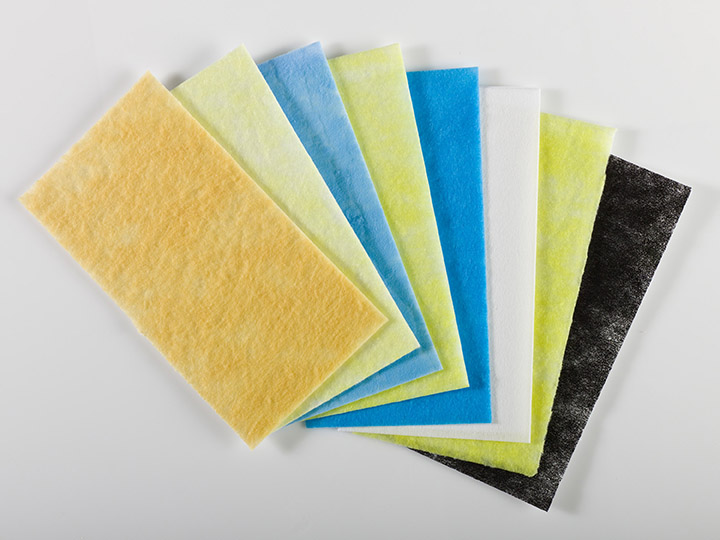As the general public becomes more aware of the health and productivity advantages of good indoor air quality (IAQ) and the environmental sustainability and cost advantages of reduced energy consumption, air filter manufacturers are taking a closer look at the filter media they use.
No longer commodity products specified solely on purchase price, high-performance filter media can provide distinct IAQ and energy savings advantages throughout a filter’s lifecycle.
To provide the best value for their customers, filter manufacturers would be wise to consider nonwoven filter media with an electret charge.
In a properly designed filter, electret-treated nonwoven filter media can provide high initial and sustained particle capture efficiencies with a low airflow resistance, offering reduced energy consumption and costs.
Filter Lifecycle Costs
Facility managers and purchasing personnel for commercial and institutional buildings may think they have finished paying for their air filters when they pay the invoice. However, an air filter’s purchase price and maintenance costs are just a small part – 18% – of the overall costs to operate the filter.
The primary factor that determines the total lifecycle cost of a filter is energy consumption, which accounts for about 81% of the annual cost.
The cost-savings stream associated with energy can be estimated by examining the impact of a filter’s airflow resistance. With a lower airflow resistance, the heating, ventilation and air-conditioning (HVAC) system needs to overcome less resistance to deliver the required airflow, thus reducing the system’s energy consumption.
Unlike filters made with media that use only mechanical methods of particle capture, filters made with media that also incorporate an electret charge typically have less resistance to airflow, thus reducing electricity costs in use while maintaining high particle capture efficiencies.
The tab below illustrates the potential annual savings in energy costs when using a filter with electret-treated media (Filter A). Note the difference in initial airflow resistance between the electret-treated media filter and the filter (B) that uses mechanical filtration methods only.
While a saving of $83 may not seem significant, keep in mind that those savings are per filter. In larger commercial and institutional buildings with as many as 12 or more filters housed in rooftop units, the savings can quickly add up.
Filter A Filter B
Efficiency MERV 14 MERV 14
Filter style 12” deep rigid 12” deep rigid
Initial air flow resistance 0.27” WG 0.60” WG
Final air flow resistance 1.40” WG 1.50” WG
Energy cost $301/year $384/year
Energy consumption modeled using the calculation: energy consumption = Q*dP*t/n*1000
Assumes 24/7/365 operation, energy cost of $0.1033/kWh, fan, motor, drive efficiency (n) of 58%; Filter A, airflow rated at 0.93 m3/second; Filter B, airflow rated at 0.94 m3/second.
In addition to energy consumption, a longer-lasting filter can help reduce lifecycle costs by reducing change-outs, thus justifying a higher unit price for a filter with high-performance, electret-treated nonwoven filter media.
The key metric here is dust-holding capacity, which refers to how much particulate the filter can handle before it starts to plug up and cut off the airflow to the HVAC system.

Value of Good IAQ
In addition to the “hard” costs associated with a filter’s purchase price and energy consumption, smart filter purchasers also consider the “softer” costs associated with occupant health, productivity and absenteeism. They are growing more aware of the health dangers associated with dust, mold, pollution, bacteria and allergens in indoor air, and they want healthy places to work, learn, shop, heal and relax.
Consider asthma, a condition regularly linked to poor IAQ: for adults, asthma is a leading cause of work absenteeism and “presenteeism” (when people come to work even when they are sick), resulting in about 14 million missed or less-productive work days each year, at a cost of nearly $2 billion in the US.
High filter media capture efficiencies for E1 particles (very fine particles in the 0.3-1.0 µm range) and E2 particles (fine particles in the 1.0-3.0 µm range) are critical for achieving good IAQ and helping building occupants avoid the cost of productivity drops associated with illness due to poor IAQ.
Electret-treated nonwoven filter media can provide high initial and high sustained efficiency over the entire filter lifecycle. They are particularly useful in increasing the capture efficiency for these E1 and E2 particles – the particles that travel to the deepest part of the lungs, where they can cause health problems.
A word of warning
Many pleated filters today, especially at commonly used MERV 8, have very low E1 and E2 efficiencies. In fact, until recently, under the ASHRAE 52.2 standard, there was no minimum requirement for E1 particulate capture below MERV 14 and no minimum requirement for E2 particle capture below MERV 9.
Filter media specifiers also should be aware that it is possible for two similar filters of the same minimum efficiency reporting value (MERV) – one using media that captures particles only through mechanical methods and the other using electret-treated media – to have different filtration efficiencies.
For example, a MERV 8 electret-treated media filter could have better E1 particle capture than a MERV 11 mechanical-only filter since there is no E1 requirement below MERV 11.
Conclusion
The air filtration industry is extremely competitive with many products perceived as non-differentiated and substitutable.
Because the initial purchase price of a filter is tangible, one can see the cost savings and resultant effect on budget immediately. (This is the same reason coupons work so effectively in the consumer retail market; they provide instant satisfaction.)
It is imperative for filter manufacturers to look beyond the purchase price of high-efficiency filter media when seeking to give their customers IAQ and energy advantages.
A good understanding of the various costs involved over the lifecycle of an air filter and the benefits of electret-treated nonwoven filter media is the first step toward giving filter purchasers more for their money.
For more information contact:
Kimberly-Clark Professional Filtration
Tel: +1 800 241 3146
Website: www.kcfiltration.com


